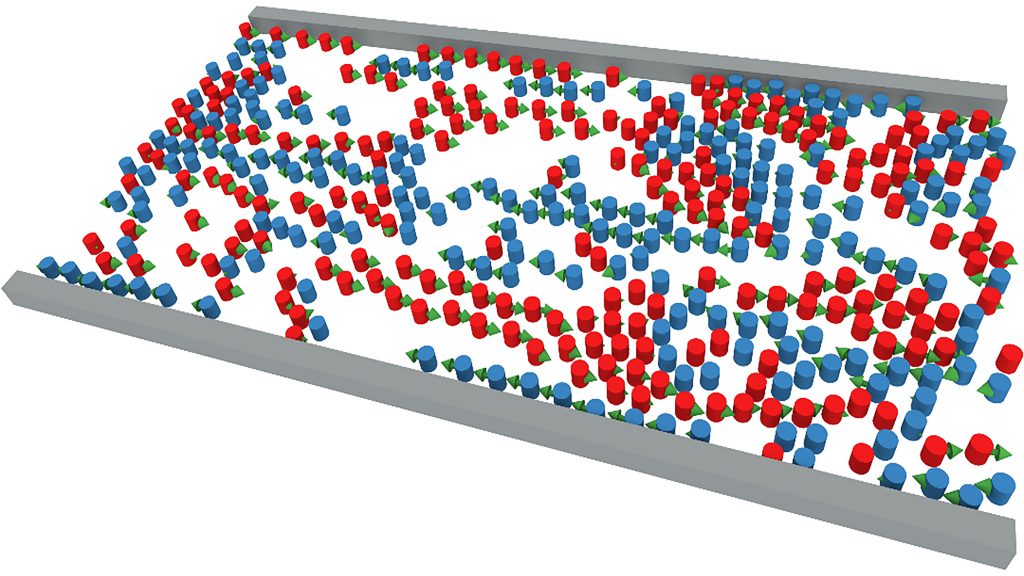WASHINGTON, October 19, 2021 — Along with the use of face masks, social distancing in public remains one of the most practiced front-line defenses against the spread of COVID-19. However, flows of pedestrians, including those practicing the 6-foot rule for distancing, are dynamic and characterized by nuances not always carefully considered in the context of everyday, public spaces.

In Physics of Fluids, by AIP Publishing, researchers from Carnegie Mellon University examine the dynamics of social distancing practices through the lens of particle-based flow simulations. The study models social distance as the distance at which particles, representing pedestrians, repel fellow particles.
“Even at modest pedestrian density levels, a strong preference for 6 feet of social distance can cause large-scale pedestrian ‘traffic jams’ that take a long time to clear up,” said Gerald J. Wang, of Carnegie Mellon University. “This is pretty evident to all of us who have engaged in that ‘awkward dance of social distance’ in a grocery store aisle during the past 18 months, but it has important implications for how we set occupancy thresholds as workplaces, campuses, and entertainment venues return to pre-pandemic densities.”
Motivated by the pandemic, the researchers shed light on the relationship between social distancing and pedestrian flow dynamics in corridors by illustrating how adherence to social distancing protocols affects two-way pedestrian movement in a shared space. The results add to a significant body of recent work around the effects of various factors on pedestrian counterflows and focuses on the characterization of jamming phenomena in relatively narrow corridors, a topic of current interest.
“Dense pedestrian flows plus social distancing recommendations is a recipe for a lot of frustration,” said Wang. “I mean this both in the physics sense of the word ‘frustration,’ with low particle mobilities because a bunch of ‘stuff’ is seemingly in their way, and in the everyday sense of the word ‘frustration,’ with people feeling flustered because, well, a bunch of ‘stuff’ is seemingly in their way!”
Wang noted public health messaging should be aligned with realistic, achievable behavior, adding that “strict adherence to social distancing — a la ‘the 6-foot rule’ — is simply not a practical recommendation in pedestrian flows at densities that are typical of large, shared venues.”
Though conceptually easy to digest, the findings underscore the complications of applying a “one-size-fits-all” policy recommendation to a public sphere characterized by nuanced pedestrian flow dynamics.
“Particle-based flow simulation, powered by high-performance computing, has enormous potential to rapidly explore a broad range of pedestrian flow problems, both during the pandemic and beyond,” said co-author Kelby B. Kramer.
###
For more information:
Larry Frum
media@aip.org
301-209-3090
Article Title
Social distancing slows down steady dynamics in pedestrian flows
Authors
Kelby B. Kramer and Gerald J. Wang
Author Affiliations
Carnegie Mellon University
